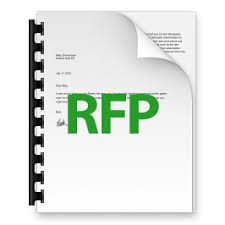At a kickoff meeting earlier this week, I was having a disturbing conversation with a group of sales people. It seemed a big part of their “prospecting,” was trolling customers for RFPs and RFIs.
I probed them on this, their response was, “It’s so easy, these are people who already want to buy, they’ve put together their requirements, all we have to do is just respond to the RFPs! It’s pretty easy to chase after them!”
I asked, “What’s your win rate, what’s the quality of the deal (i.e. are you winning through pricing)?” Things got a little sketchy, a lot of shoulder shrugs, evasive looks, finally, “We win our fair share, so if we get enough of them we can make our numbers…”
The conversation brought back dozens of similar conversations I’ve had over the years. People believing RFP business is low hanging fruit and spending all their time (and company resources) chasing RFPs.
Don’t get me wrong, RFPs are mandatory in certain sectors. For example, most governmental work requires RFPs. Many companies have policies that demand a formalized RFP process. Responding to RFPs is a part of what many of us do.
Having said that, in our company, we never respond to a RFP that we didn’t write! And we are pretty unmovable in providing that advice to our clients.
The problem with RFPs is by the time a RFP is issued, the customer has locked in on their priorities, requirements, how they will evaluate alternatives, how they will make a decision, how will make an award. Responding to a RFP demands no selling, it’s simply an act of providing responses to the things asked in the RFP.
By the time the RFP comes out, while there is some “wriggle room,” for the most part you have lost all your opportunity to sell, but most of our opportunity to educate the customer, to create value, to help shape how they might achieve their goals has past—and by waiting for the RFP, we have lost all that opportunity.
More frightening is, What if the competition didn’t miss that opportunity? What if they were in early educating the customer, helping them define and prioritize what they are trying to achieve, helping them understand the critical issues around the buying decision?
While they may not have “written” the RFP, they are likely to have significantly influenced and shaped the RFP.
The time for selling in organizations using the RFP process is not when the RFP is issued, but long before–as they are just determining they have a problem and want to take action on it.
This should be no surprise, customers always go through similar processes of identifying a problem and committing to take action, defining requirements, educating themselves on the issues and the alternatives. It’s a part of every buying process.
Our sales processes are aligned with these buying processes. The “heavy lifting” in selling is not in presenting the final priced proposal, but in all the work that leads to that point. It’s in the qualification and discovery, it’s in the process of helping customers organize to buy, to define their problems, to facilitate their buying process.
Responding to RFPs misses all that. It misses the fundamental abililty to differentiate yourself, to create value with the customer and to help shape their thinking and approaches to the solutions they want to consider.
Of course, at the end of that process, a RFP will be issued and you have to compete. But you will be better positioned to do so, and the customer will have a deeper understanding of your offerings and will value what you bring to their solution.
Do the hard work right, and every once in a while you might see a tender that looks something like this, “Any one is invited to respond, as long as their legal corporate name is Partners In EXCELLENCE, and their corporate HQ is located at……”
Waiting for RFPs and responding to them is not selling. Never respond to a RFP that you haven’t written–or at least been involved in the development. You are wasting your time!

Hi Dave,
Strong agree.
At BEST the customer remembered going on this journey with you in the past, liked it, and is trusting you’ll get them what they want. Even then, this is dangerous because you might be getting them something that doesn’t help them.
Actually, I think this is the most dangerous outcome of a RFP. I’m looking at the order history of big accounts and one thing I see repeatedly are accounts who have been customers with us for years, purchased something in the past, completed the sales cycle for a 30k+ product in a month or so (when our average cycle is six months for a deal of that size), then immediately abandoned it. A lot of times the solution was never even installed in the first place! This is incredibly damaging in my opinion!